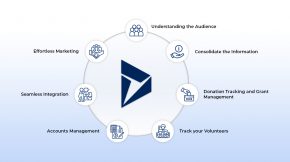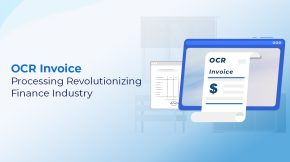Four Types of Analytics That Helps You Make Sense of Your Data
Struggling with your data in analytics? Not sure how to define analytics for your business? Or which types of analytics you should even be using?
A lot of companies feel lost in the amount of data in analytics they have. It’s hard to turn that data in analytics into something you can actually use. This guide gives you a simple look at the four analytics types – descriptive, diagnostic, predictive, and prescriptive. It’ll help you get better at Business Intelligence (BI) and make smarter decisions based on your data in analytics.
The Four Analytics Types
There are four main analytics types. Each one answers a different question about your data in analytics:
- Descriptive Analytics: What Happened? (Understanding Past Data)
- Diagnostic Analytics: Why Did It Happen? (Finding the Reasons)
- Predictive Analytics: What Will Happen? (Looking into the Future)
- Prescriptive Analytics: How Can We Make It Happen? (Taking Action)
Knowing about each analytics types and how it fits into your company’s what is analytics plan is key to getting the most from your data in analytics. Choosing the right analytics types helps you define analytics and get real value from your data in analytics.
Descriptive Analytics
What is Descriptive Analytics?
What is analytics if you can’t even see what’s already happened? Descriptive analytics is all about looking at past ‘data in analytics’ to see how things went. It answers the question: “What happened?” It’s the most common analytics types, and it’s the starting point for everything else. ‘Descriptive analytics types’ are the base for any company that wants to ‘define analytics’ and improve how they use ‘data in analytics’.
What You Can Use It For:
- Sales Reports: How much did we sell? Which products sold best? Which areas did well?
- Productivity Check: How productive were we? Did some teams do better than others?
- Customer Loss: How many customers left? What kind of customers were they?
- Website Views: How many people visited our site? What pages were popular? How long did they stay?
- Marketing Results: How many leads did our ads bring in? How many became customers? Was it worth the money?
Descriptive analytics is the easiest to start with because you already have the ‘data in analytics’. It gives you a general idea of how things are going, so you can spot trends and patterns. Getting good at ‘descriptive analytics types’ is important to ‘define analytics’ and build a strong base for more advanced analysis.
How to Make It Work for You:
- Organize Your Data: Use simple methods to organize your ‘data in analytics’. This makes it easier to find what you need and analyze your ‘data in analytics’.
- Show It Clearly: Use charts and graphs to show your ‘data in analytics’ in a way that’s easy to understand.
- Make Dashboards: Create simple dashboards to see all your important information in one place.
- Keep Reporting Consistent: Make the same reports regularly, so everyone has the same information.
- Collect Data Automatically: Automate how you get ‘data in analytics’, so you save time and avoid mistakes.
- Set Rules for Your Data: Have rules about how your ‘data in analytics’ is stored and used, so it’s accurate and reliable.
How Do You Get Started with Descriptive Analytics?
If you’re using basic reports or spreadsheets, you’re already doing some descriptive analytics. To do more, focus on making things repeatable and automatic. Standardize your ‘data in analytics’ steps and automate tasks like combining ‘data in analytics’ and doing calculations. Using a modern ‘what is analytics’ tool can make this easier. Think about tools like Tableau, Power BI, or Qlik.
A Little Hint:
At Beyond Key, we know how important it is to have a solid base in descriptive analytics. Our team can help you find the right tools and steps to get the most from your past ‘data in analytics’. We can help you ‘define analytics’ at your company and create a ‘data in analytics’ plan that fits your goals.
Diagnostic Analytics
What is Diagnostic Analytics
Diagnostic analytics takes descriptive analytics a step further. It looks at why something happened. It digs into the ‘data in analytics’ to find the reasons behind events and problems. This ‘analytics types’ is often skipped, but it’s important for understanding what’s driving your business. ‘Diagnostic analytics types’ help you ‘define analytics’ by giving you a deeper understanding of the ‘data in analytics’ you’re looking at.
What You Can Use It For:
- Sales Drop: Why did sales go down last quarter? Was it competition, customer changes, or just the time of year?
- Customer Loss Increase: Why are we losing more customers? Is it bad service, high prices, or not enough features?
- Product Success: Why are some products selling so well? Is it a good ad campaign, better features, or a change in the market?
- Website Traffic Decrease: Why did fewer people visit our site last month? Was it a search engine change, a technical problem, or less advertising?
- Bad Ad Campaign: Why didn’t our ad campaign work? Did we target the wrong people, have a bad message, or use the wrong channels?
Diagnostic analytics is easier to use than predictive analytics, and it can often solve problems you thought you needed more advanced methods for. Understanding ‘analytics types’ like diagnostic analytics is important to ‘define analytics’ and get useful information from your ‘data in analytics’.
How to Make It Work for You:
- Use Modern Tools: Use the search and AI features in modern ‘what is analytics’ tools to find deeper insights. These tools can help you see connections and patterns in your ‘data in analytics’ that you might miss otherwise.
- Try Augmented Analytics: Look into special tools that focus on diagnostic analytics. These can automate finding the root causes of problems and give you ideas on what to do.
- Don’t Skip This Step: Don’t jump to predictive analytics before you know why things happened. If you don’t understand the reasons, your predictions won’t be as good.
- Mine Your Data: Use ‘data in analytics’ mining methods to find hidden patterns and relationships in your ‘data in analytics’.
- Find the Root Cause: Ask “why” over and over to get to the real reason behind problems.
- Divide Your Data: Divide your ‘data in analytics’ into groups to see how different groups are performing. For example, you can divide customers by age, purchase history, or website activity.
How to Get Started with Diagnostic Analytics
If you’re using a modern ‘what is analytics’ tool, try out its diagnostic features. Tools like Power BI and Qlik have features that help you find what’s driving your business. You can also look at software companies that specialize in “augmented analytics” for a more complete solution.
A Little Hint:
Beyond Key’s diagnostic analytics services can help you go beyond just knowing what happened to understanding why. Our experts can help you use the right tools and methods to find the hidden reasons behind your business results. We can help you ‘define analytics’ at your company and create a diagnostic ‘data in analytics’ plan that fits your goals.
Predictive Analytics
What is Predictive Analytics
Predictive analytics uses past ‘data in analytics’ and machine learning to guess what will happen in the future. It answers the question: “What will happen?” This ‘analytics types’ lets you see trends coming, spot possible risks, and make plans ahead of time. Predictive ‘analytics types’ are key for companies that want to ‘define analytics’ and get ahead of the competition.
What You Can Use It For:
- Predict Machine Problems: Predict when machines will break down. This helps you schedule maintenance and avoid expensive downtime.
- Assess Credit Risk: Figure out who is likely to pay back loans and spot fraud. This helps you make better lending decisions and avoid losses.
- Prevent Customer Loss: Guess which customers might leave and try to keep them. This helps you keep customers and build loyalty.
- Guess Demand: Predict how much demand there will be for your products. This helps you keep the right amount of stock and avoid running out.
- Forecast Sales: Predict how much money you’ll make in sales. This helps you set realistic goals and use your resources wisely.
How to Make It Work for You:
- Know the Problem: Clearly ‘define analytics’ the problem you want to solve and what you want to predict. This helps you focus and choose the right ‘data in analytics’ and methods.
- Set Goals: Say what you want to achieve by making the prediction. This helps you measure if your project is working.
- Prepare Your Data: Collect, organize, clean, and check the quality of your ‘data in analytics’ before you start. This is the most important part.
- Choose the Right Model: Pick the right machine learning model for your problem. There are many models, so choose one that fits your ‘data in analytics’ and goals.
- Check Model Performance: See how well your model is working. This helps you know if it’s accurate and reliable.
- Use and Watch Your Model: Start using your model and keep an eye on how it’s doing. This helps you make sure it keeps giving good predictions.
How to Get Started with Predictive Analytics
Before you start modeling, make sure you have a good base in descriptive and diagnostic analytics. This makes preparing your ‘data in analytics’ easier. Start with an area where you ‘define analytics’ well, like sales reporting, where ‘data in analytics’ is clear and high-quality.
A Little Hint:
Beyond Key’s predictive analytics skills can help you predict the future. Our team can guide you through everything, from getting your ‘data in analytics’ ready to building the model. We’ll make sure you get predictions you can use. We can help you ‘define analytics’ at your company and create a predictive ‘data in analytics’ plan that fits your goals.
Prescriptive Analytics
What is Prescriptive Analytics
Prescriptive analytics is the most advanced ‘analytics types’. It combines descriptive, diagnostic, and predictive analytics to tell you what actions to take. It answers the question: “How can we make it happen?” This ‘analytics types’ guides you to make the best decisions based on what the ‘data in analytics’ tells you. ‘Prescriptive analytics types’ are the top level of ‘what is analytics’, helping companies make smart and proactive decisions.
What You Can Use It For:
- Change Prices Automatically: Adjust prices based on customer demand and other things. This helps you make the most money.
- Target Training: Send employees for extra training based on problems they’ve had. This helps them do better and avoid mistakes.
- Improve Supply Chain: Make your supply chain better to save money and be more efficient. This includes managing stock, planning routes, and working with suppliers.
- Personalized Ads: Send personalized ads to customers based on what they like. This helps get them interested and make them buy.
- Manage Risk: Spot and reduce risks to your business. This includes protecting your supply chain, your reputation, and your money.
How to Make It Work for You:
- Master the Basics: Get good at descriptive, diagnostic, and predictive analytics. You need these to do prescriptive analytics well.
- Know What to Do: Clearly ‘define analytics’ the actions you want to take and what will trigger those actions. This helps you automate decisions and make sure they fit your goals.
- Create Scenarios: Test your models with different scenarios to see how well they work. This helps you find problems and make your models better.
- Get Feedback: Use feedback to keep improving your models. This helps them stay accurate and relevant.
- Use with Business Processes: Connect your models to your business processes. This helps you automate decisions and make sure actions are taken.
- Watch Performance: Keep an eye on how your models are doing to make sure they’re working well. This helps you find areas to improve and make your models better.
How to Get Started with Prescriptive Analytics
You can’t start with prescriptive analytics without a good base in the first three areas. If you’re ready, focus on knowing what actions you want to take and what will cause those actions.
A Little Hint:
Beyond Key’s prescriptive analytics solutions can help you make decisions automatically and improve your business processes. Our experts can work with you to ‘define analytics’ what actions you want to take and build systems that give you ‘data in analytics’-driven advice. We can help you turn your ‘data in analytics’ into a valuable tool and get ahead of the competition.
Generative AI and Analytics
What is Generative AI?
While descriptive, diagnostic, predictive, and prescriptive analytics are the foundation, generative AI is changing how we use ‘data in analytics’. Generative AI uses machine learning to create new content or ‘data in analytics’. Instead of just analyzing what’s already there, it makes new and realistic things that help solve problems and make decisions. Generative AI can help you ‘define analytics’ by showing you new ways to see and use your ‘data in analytics’.
How to Start with Generative AI
- Match with Your Goals: Use generative AI to help you reach your business goals. It should add to what you’re already doing with traditional ‘analytics types’.
- Check Your Setup: See how you can use generative AI with your current ‘what is analytics’ tools.
- Involve Everyone: Talk to your team about how you can use generative AI.
- Plan for Tech and People: Think about the technology and people you’ll need to use generative AI.
Getting to Success with Data
Moving through the ‘what is analytics’ stages isn’t a race. Knowing how each ‘analytics types’ helps you understand your ‘data in analytics’ and use it to reach your goals is key to getting a return on your investment in ‘data in analytics’. Getting good at the different ‘analytics types’ is important to ‘define analytics’ and get the most from your ‘data in analytics’.
A Little Hint:
Beyond Key can help you move through the ‘what is analytics’ stages and find the right solutions for your business. Contact us for a chat. We can help you ‘define analytics’ at your company and create a ‘data in analytics’ plan that fits your goals.
In Conclusion
By understanding and using the four ‘analytics types’, you can turn your ‘data in analytics’ into useful information and make big improvements in your business. Reach out to Beyond Key for help with making your BI better and getting the most from your ‘data in analytics’. We’re here to help you ‘define analytics’ and succeed with ‘data in analytics’.












